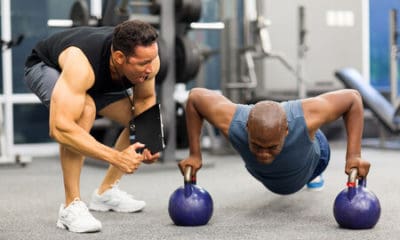Ways Parents Can Help Their Kids Become Better Students and Actually Love to Learn
Parents can help their kids become better students and learners by doing a few simple things.
It starts with focusing on the kid’s strengths and not their struggles.
Our kids have unique learning styles that are innate.
When we apply learning styles that are contrary to their natural strengths, we get frustration, chaos, boredom at school, lack of engagement, and stress.
When we adjust learning to fit the kid, we get what I call ‘Love to Learn’ kids.
If it sounds simple, I assure you it is, but it is not easy to apply.
Our current education system primarily focuses on one learning style, the Fact Finder.
This is not the fault of our wonderful educators.
The teachers I work with want and try to apply individual learning styles, but to a great extent, their hands are tied with the prominence of standardized tests and a rigid curriculum environment.
The good news is that parents can take ownership of how their children approach learning by teaching them specific learning strategies.
How Parents Can Help Their Kids Be Better Students
To start, we need to identify our children’s unique learning styles (visual, auditory, tactile, or kinesthetic), and we do this by watching them play…
Johnny, Megan, Matt, and Christine are very excited.
It’s playtime at school.
The sun is out as they run from the classroom to the play yard.
Their teacher, Mr. Moore, encourages them to build a sand castle in the sandbox.
Each child has a different approach to this task
As they approach the sandbox, Megan stops with her hands on her hips and begins to ask questions.
“How big is the castle?”
“Remember the last time we built a castle?”
“Why are we building a castle?”
Megan solves problems by gathering information (auditory learner).
It’s important for her to know all the facts before getting started.
This is a child who might get frustrated at school if simply told to do something.
She needs to know why, and she needs information, lots of information, and then watch out.
She will go to town.
Megan’s learning style is a Fact Finder.
She is our ‘why’ child who is very logical and loves to explore and search for answers.
Johnny is not stopping for anything!
He has great ideas and is a visual learner.
Johnny is holding court in the middle of the sandbox, gesturing very enthusiastically as he tells his friends all his amazing ideas for the best sand castle ever made.
His ideas are imaginative and creative, and he is not shy about telling his friends all about them.
He can see the castle in his head, complete with a moat and drawbridge.
He is a visionary and likes to do things his own way.
This child doesn’t pay particular attention to the details of his school homework and will become disheartened if told to do things without the freedom to put his spin on things.
Johnny is a Quick Start, a visionary child who can create wonders out of nothing.
Matt is the kid with a plan!
He has a process for building the castle.
First, you level the sand, gather pebbles for a walkway, and then carefully construct the castle’s walls.
His approach is very systematic.
Matt (tactile learner) needs to be able to sort and organize information, often through touch, doodling, or writing out the plan.
If asked to “wing it,” Matt will get nervous that a mistake will be made.
Matt likes to do things one at a time and gets discouraged when expected to multitask or work without a plan.
Matt’s learning style is a Follow Through, and he can be seen making order out of chaos.
This is the kid who has a particular way that he prefers to line up his toys on the toy shelf.
Mr. Moore decides to check in on the little monkeys.
As he walks towards the evolving sand castle he notices that Christine is knee-deep in the sand, building the castle as if it will stand the test of time.
Christine likes to get her hands dirty and will get frustrated if the castle is not of the highest quality.
When given math homework, her mom knows that numbers need to be more than figures on a piece of paper.
Christine (kinesthetic) needs tangible items like blocks or something to get her hands on in a three-dimensional way.
Christine is an Implementor.
She learns by demonstrating and engaging in her environment.
Now that we recognize our children’s unique learning styles and natural talents, we can help them by structuring learning environments and homework so they can actually love learning.
Tips for structuring homework and learning based on kid’s innate strengths:
How parents can help the Fact Finder kids:
Here are some tips for making learning more enjoyable.
- Strengths: These wonderful ‘why’ children are very logical and like to find the answers. They play, learn and solve problems by gathering information and asking questions.
- Toys that foster their talents: When looking for toys that will engage them, think about logic and ways they can discover answers independently. Science kits are great because it encourages the child to find their own conclusions. Any flashcard type works well if it contains detailed information on one side. Another great option is information-rich board games like Jeopardy.
- Homework Tips:
- Give them ample time to find and explore answers. You will probably find yourself answering a lot of ‘why’ type of questions. Once they have gathered enough information, they will get moving on the assignment.
- Studying for a big test? Resist the urge to tell them the answers. Instead, play a Jeopardy-style game with post-it-notes and post them on a larger piece of paper. Write the question on the front of the post-it-note and put the answer behind it.
How parents can help the Quick Start kids:
Here are some tips for making learning less of a struggle.
- Strengths: These visionary children have a great imagination. They play, learn and solve problems by putting their unique spin on things…they are our ‘idea’ children.
- Toys that foster their talents: When looking for toys that will engage them, think about toys that promote creativity and nurture their need to imagine solutions without too many constraints. Costumes are a great option; in fact…they don’t have to be a costume for a particular character. They like what I call ‘a box of randomness.’ Collect random costume items like silly hats and props, and they will create something new and unexpected. Arts and crafts work well as long as they are not expected to follow the rules or color inside the lines.
- Homework Tips:
- Homework needs to be more than an assignment. Let them get involved in the story, literally. If they have a book report due, have them act it out first and then complete it. If this sounds like a waste of time, it’s not. They will get the report done much faster once they can put their spin on the assignment.
- Studying for a big test? Get creative. Replace the pencil with a paintbrush and let them paint the answers. Use mnemonic songs or a poem to help with memorization.
How parents can help the Follow Through kids:
- Strengths: As a process-orientated children, they thrive with order and routine. They play, learn and solve problems by organizing and systematizing.
- Toys that foster their talents: When looking for toys that will engage them, think about toys that inspire their natural ability to think in a linear way. Games such as Battle Ship, Brain-Quest, and even Chess nurture their amazing abilities. Any toy that encourages them to organize chaos will be a welcome addition.
- Homework Tips:
- These children like to know the order of things…what comes first, second, or third. Get them an ink board and have them write down what homework assignment they will tackle first, second…a homework agenda!
- Studying for a big test? Get organized. An organized study environment is key to success. Matching and color-coded subject folders, boxes for supplies, and pens and pencils in a container. Play ‘homework chairs’ when studying for a big test. This strategy works well with their need for a system. Put several chairs in a line. On each chair, put a different question. Have the child sit on the chair, answer the question, and then move on to the next chair in the sequence.
How parents can help the Implementor kids:
- Strengths: These hands-on kiddos love to move about their environment. They play, learn and solve problems by building, creating, learning, and developing in a three-dimensional way.
- Toys that foster their talents: When looking for toys that will engage them, think about toys that foster the ‘doer’ in them. Playdoh and Legos are wonderful because they allow them to be hands-on and create models. These kids would rather ‘show you’ than ‘tell you.’
- Homework Tips:
- Homework must be more than numbers or words on a piece of paper. Get hands-on. If doing math, for example, get marshmallows and pretzels and create editable geometry.
- Studying for a big test? Get out of the chair and away from the desk. These children are kinesthetic learners who need to explore their environment. Put the study questions around a table. Have the child run around the table, pick up and answer the questions, and quickly run to the next question. If they are learning letters, have them act them out by creating the letters with their body.
Parents can help their kids be better learners with the right approach and information
Give your child, and yourself, the freedom to structure play and homework that works for their unique strengths.
Once they learn strategies that support their strengths, they will naturally take that to the classroom.
Go ahead, break the rules, and teach children to love to learn.
Next time you play with your child, take this article with you and see if you can identify their natural strengths.












Glenn Tucker
July 8, 2019 at 6:20 AM
These are excellent steps on the road to developing strong cognitive skills without which academic skills are virtually impossible to develop. When cognitive skills are strong, kids love learning
Glenn